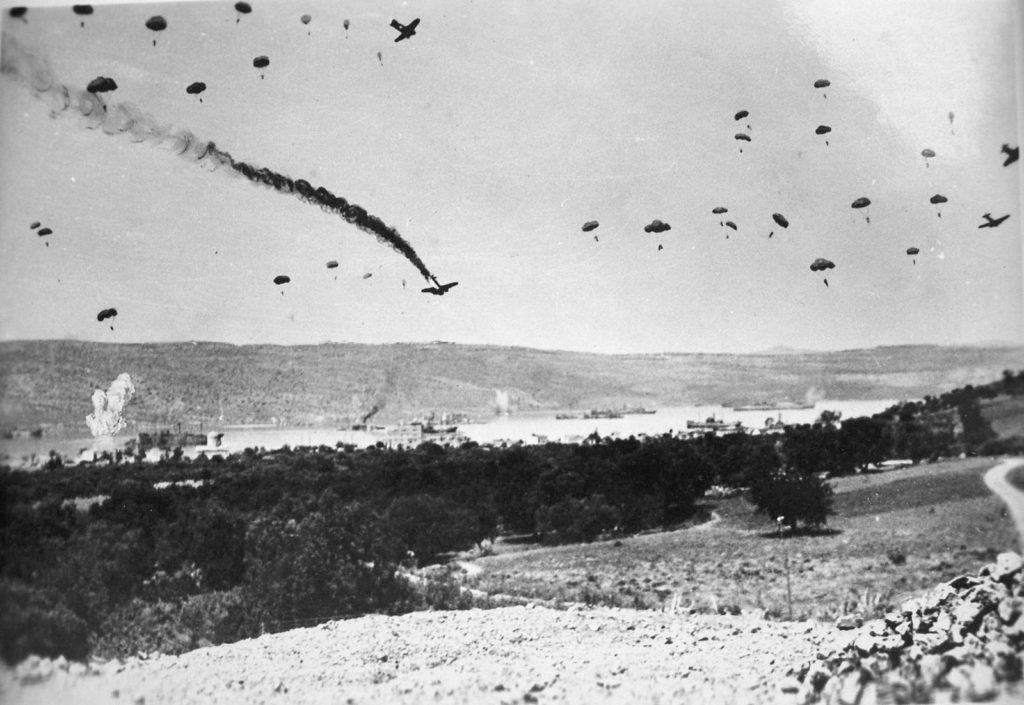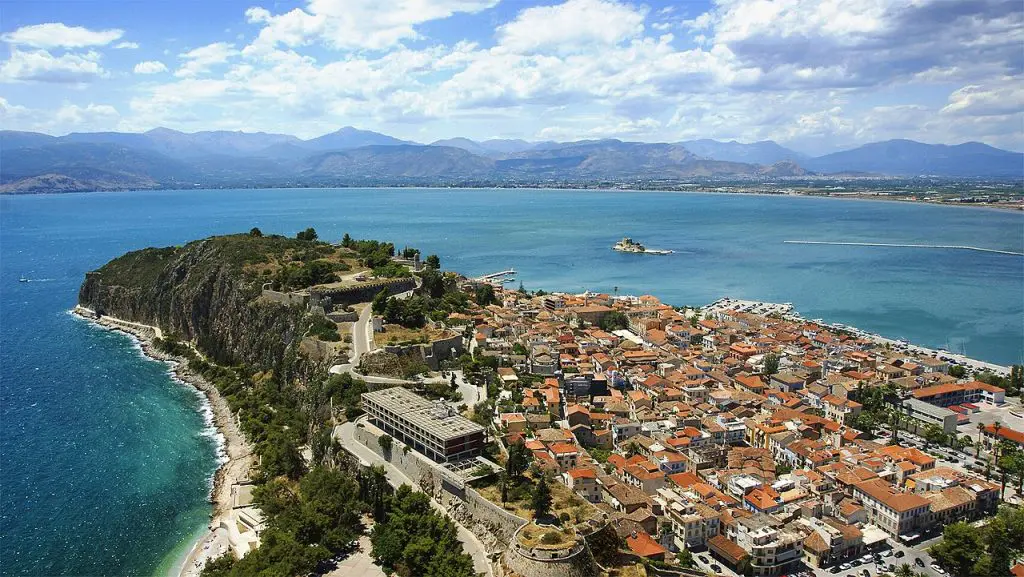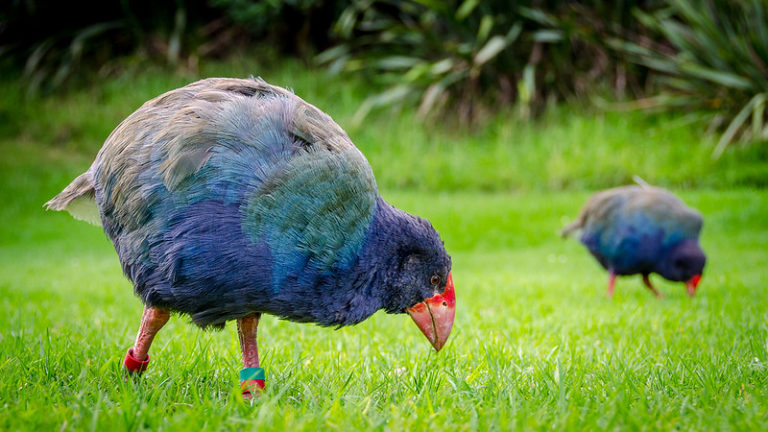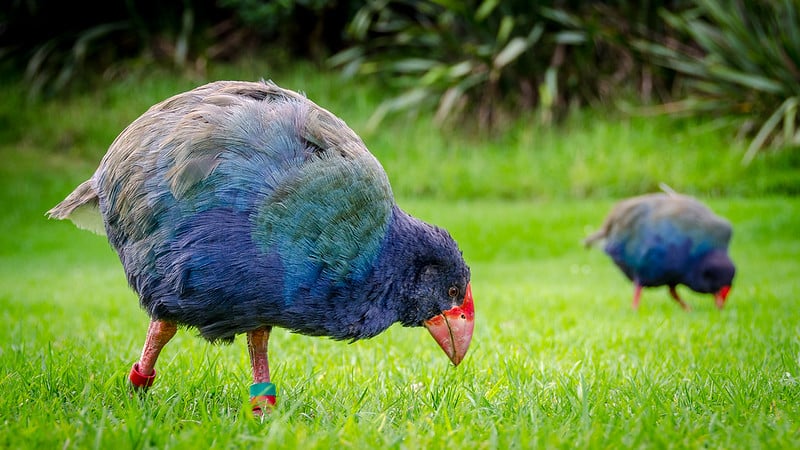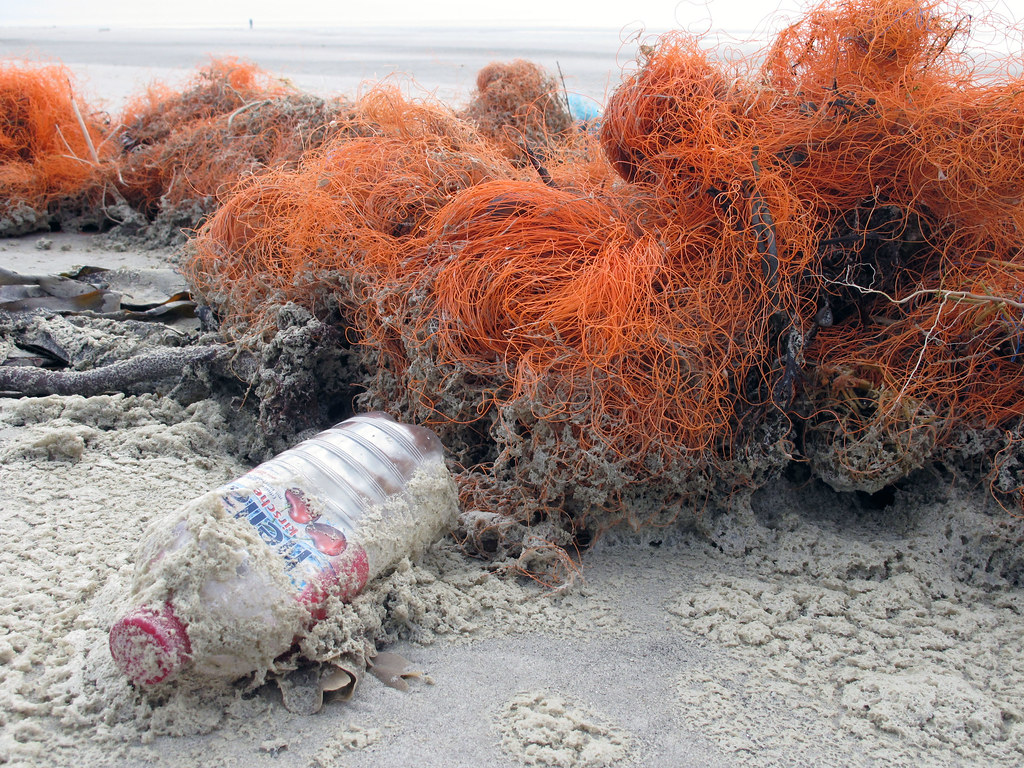
Cerberus (Greek: Κέρβερος/Kérberos) was the multi-headed guard dog of Hades, the Underworld in ancient Greek mythology. The hound’s task was to guard the entrance to the Underworld and keep the living separated from the dead.
The fearsome hound’s description varies according to different myths, but he is usually described as possessing three heads, a tail in the guise of a serpent, and snakes protruding from various parts of his body.
The most famous myth in which Cerberus appears is the Twelfth Labor of Heracles (Latin: Hercules). Various fragments of ancient Greek pottery depicting Cerberus and Heracles have survived as well as Greek and Roman statues of the hound alongside his master, the god of the Underworld Hades.
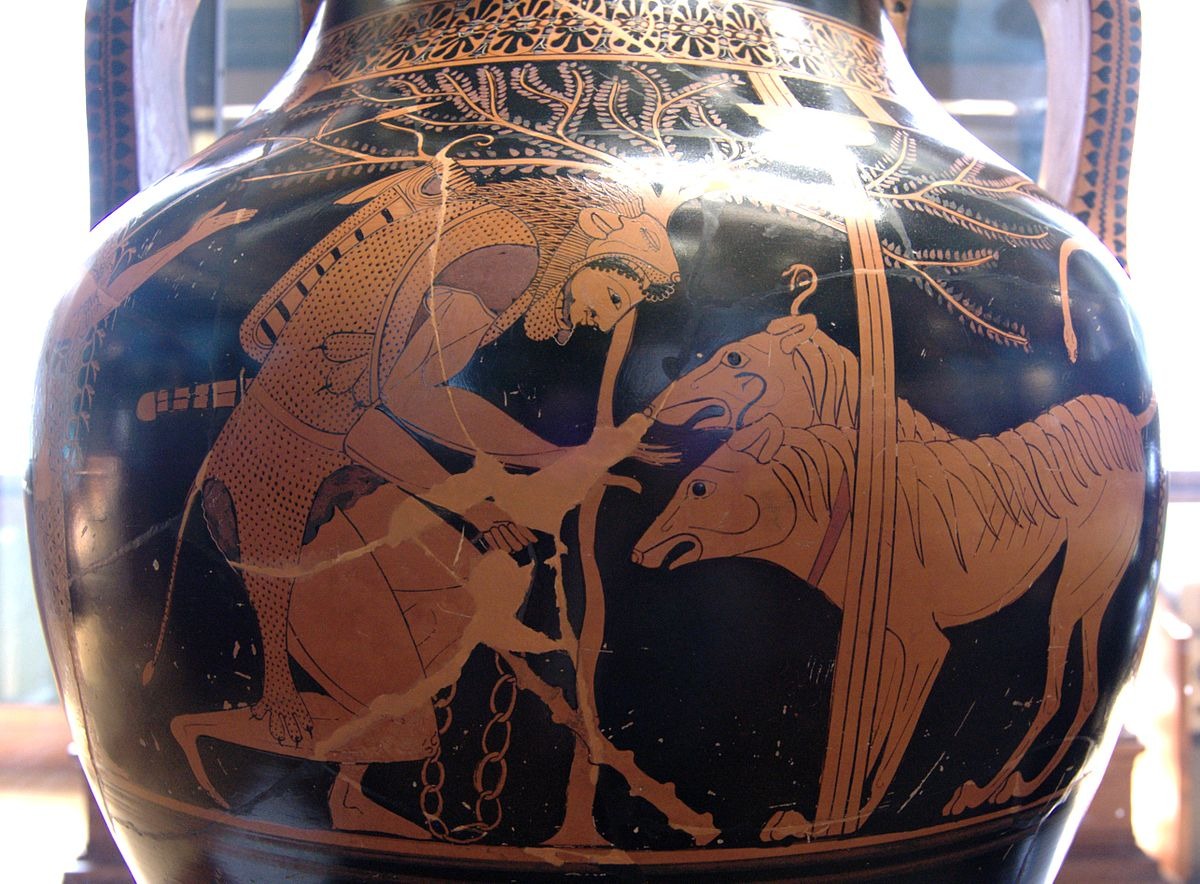
Cerberus in Greek mythology
Descriptions of Cerberus vary considerably according to different accounts. While the typical portrayal envisions Cerberus as a three-headed canine, this was not an unchanging convention. Cerberus had a lineage of multi-headed relatives; his father was the serpent-maned Typhon, and among his siblings were the Lernaean Hydra, a many-headed serpent; Orthrus, a double-headed dog guarding Geryon’s cattle; and the Chimera, with its tripartite visage – lion, goat, and serpent. Cerberus, in congruence with his kin, consistently exhibited multiple heads, with scarce iconographic exceptions.
The earliest textual mention of Cerberus appears in Hesiod’s Theogony where the hound is described as “Cerberus who eats raw flesh, the brazen-voiced hound of Hades, fifty-headed, relentless and strong.”
According to Pindar, Cerberus possessed an even more impressive one hundred heads. Yet, subsequent authors leaned towards endowing Cerberus with just three heads. Noteworthy is Horace’s Latin composition where Cerberus boasted a solitary canine head juxtaposed with a hundred serpent heads. Apollodorus took a nuanced approach, attributing Cerberus three canine heads while populating his back with an assortment of serpentine heads. John Tzetzes, possibly inspired by Apollodorus, furnished Cerberus with fifty heads, a trio of which were dog heads, the rest an assortment of other creatures’ heads.
Cerberus’ artistic representation most often comprises two dog heads, occasionally limited to just one or, on rare occasions, three. One of the earliest depictions, etched onto a Corinthian cup from Argos dating back to 590–580 BC, portrayed Cerberus with a sole, ordinary head.
The introduction of the three-headed Cerberus materialized on a Laconian cup from the mid-sixth century BC. Notable is a captivating portrayal etched onto a Vulci amphora from 525–510 BC, where Heracles can be seen subduing a two-headed Cerberus. Each head sports a protruding snake, while a serpentine tail trails behind. Cerberus emerges from an archway signifying Hades’ palace, with a tree denoting Persephone’s sacred grove nearby. Athena stands on the far left, arm outstretched, in a scene intricately woven with mythic symbolism.

The Twelfth Labor of Heracles
For his twelfth and final labor, Heracles was tasked by Eurystheus to retrieve Cerberus from the Underworld. Eurystheus expected this task to be impossible.
Before venturing into the depths of the Underworld, Heracles deliberated upon the need for additional precautions. He sought out Eumolpus, a priest residing in Eleusis, who presided over the enigmatic Eleusinian Mysteries. These sacred rituals commemorated the myth of Demeter and Persephone, offering the promise of happiness in the Underworld to those initiated into their arcane truths. Heracles fulfilled the requisites of membership outlined by Eumolpus and, in turn, was inducted into the secrets of the mysteries.
Proceeding to a place known as Taenarum in Laconia, Heracles embarked on his path to the Underworld. Through a labyrinthine rocky cave, he descended into the abyss. Within the shadowed realms of Hades, he encountered an array of wonders: monstrous beings, valorous heroes, and ethereal specters, his journey was even punctuated by a fateful wrestling match.
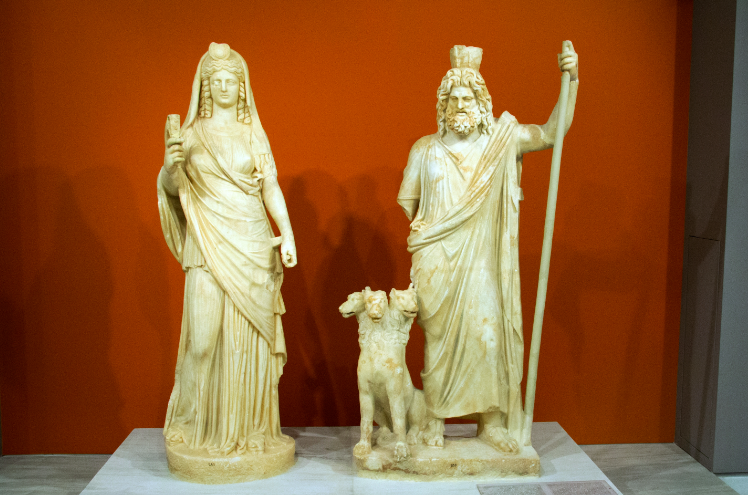
At last, he encountered Hades, the sovereign of the Underworld, and presented his plea for the release of Cerberus. Hades granted permission under one condition: Heracels must subdue the formidable creature solely through his own immense strength, devoid of weaponry.
Thus, Heracles set forth to locate Cerberus. At the gates of Acheron, one of the realm’s five rivers, he encountered the vigilant guardian of the underworld’s entrance. Heracles grappled with Cerberus, his arms ensnaring all three of the creature’s heads in a chokehold.
A struggle ensued, during which the serpent-headed tail of the formidable hound managed to inflict a wound upon Heracles. However, this setback did not deter the hero. With unwavering resolve, he prevailed over Cerberus, compelling the beast to submit to his indomitable strength.
With his objective achieved, Heracles conveyed Cerberus to Eurystheus, fulfilling the demands of his labor. Unlike other adversaries who felt the might of Heracles, Cerberus emerged from the encounter relatively unscathed, save for a bruised ego. Thus, the three-headed guardian was safely restored to his role, vigilantly standing as the sentinel of the Underworld’s threshold.
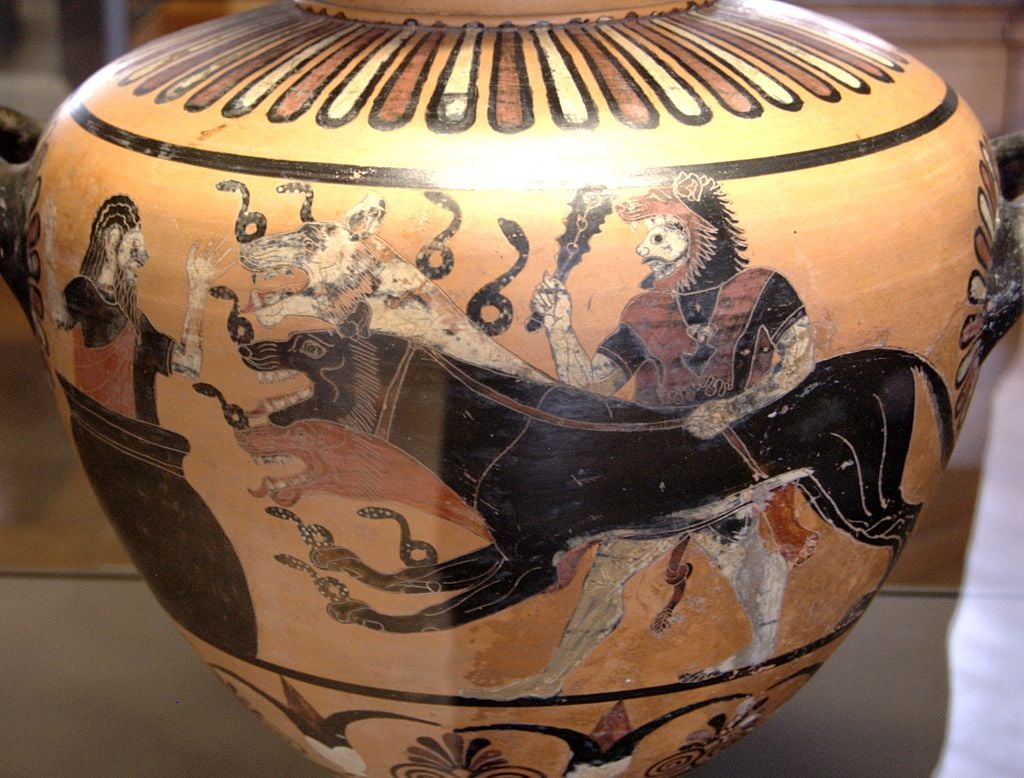
Dogs and the Afterlife in Comparative Mythology
Dogs as guardians of the afterlife appear in various mythologies across the world. Several Native American and Mesoamerican peoples believed that dogs acted as guides to the deceased, helping the dead to reach the afterlife.
For example, dogs feature prominently in depictions of the underworld across Maya pottery, a tradition that extends back to the Preclassic Period. Notably, the Chupícuaro culture of that era practiced the custom of interring dogs alongside the deceased. This practice held resonance even in the grand metropolis of Teotihuacan during the Classic Period.
The dog as an afterlife guardian is also a common trope in the mythologies of Indo-Euorpean peoples. As already discussed, Cerberus acts as the guardian of Hades in Greek mythology, but there is also Garmr, who is associated with Hel in Norse mythology.
Owing to the prevalence of dogs as guardians of the Underworld across various cultures separated by vast geographical spaces, prehistoric origins have been proposed for myths like that of Cerberus.
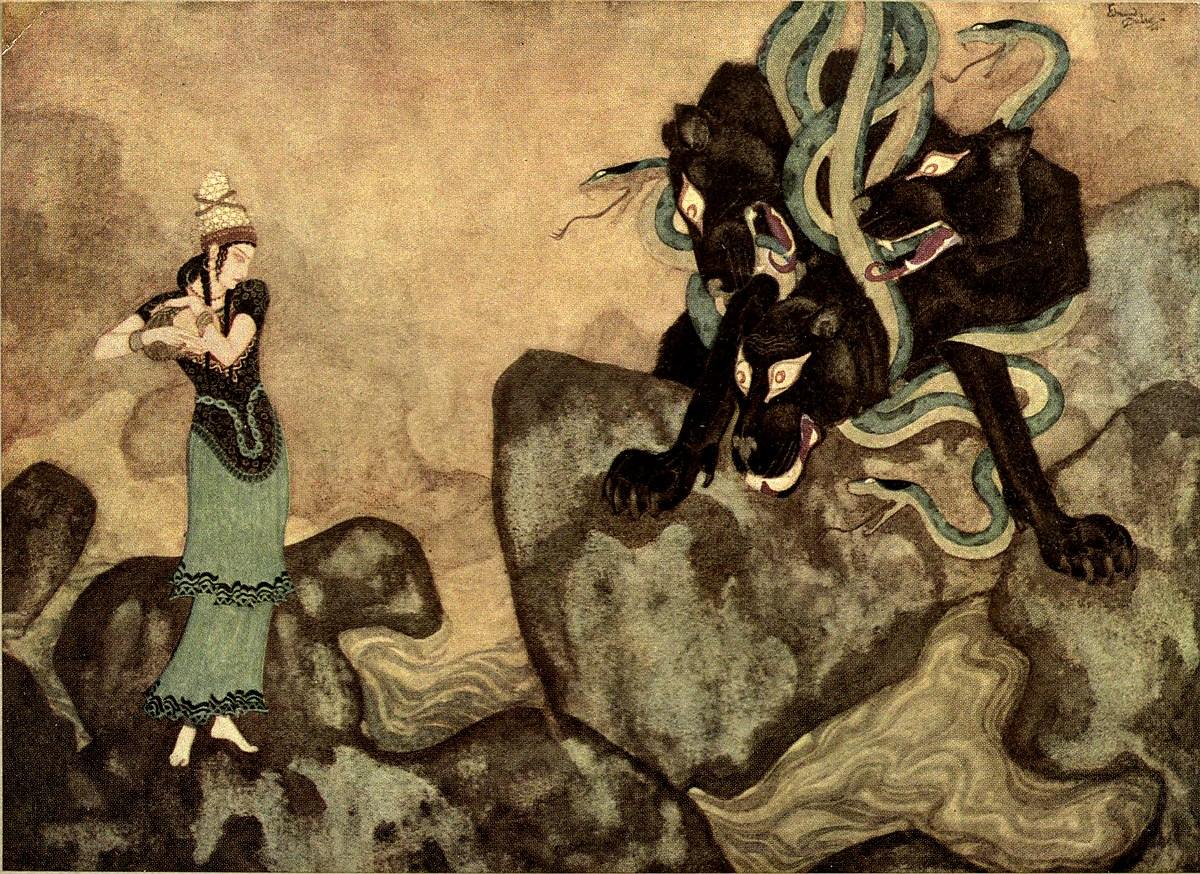
Archaeologist J. P. Mallory has proposed that the name Cerberus may be derived from the Proto-Indo-European word *k̑érberos, meaning “spotted”. Spots were a feature of domesticated dogs rather than wolves, lending credence to the idea that a hypothesized underworld guardian in Proto-Indo-European mythology would have been a dog rather than a wolf.
However, it is difficult to confirm such a theory because the Proto-Indo-Europeans were not literate and their language has been reconstructed by archaeologists on the assumption that later Indo-European languages have common root-words. Indeed, the term “Proto-Indo-European” refers to a loosely defined linguistic grouping of prehistoric peoples believed to have inhabited parts of Eurasia during the late Neolithic (New Stone Age) period.
Even earlier origins for the emergence of the Underworld guardian dog myth have been proposed, notably in Mesolithic (Middle Stone Age) Siberia, or earlier still, from the Mal’ta–Buret’ culture which existed during the Paleolithic (Old Stone Age) period. Indeed, humans may have believed in a version of the Underworld guardian dog myth when mammoths still roamed the Earth.







